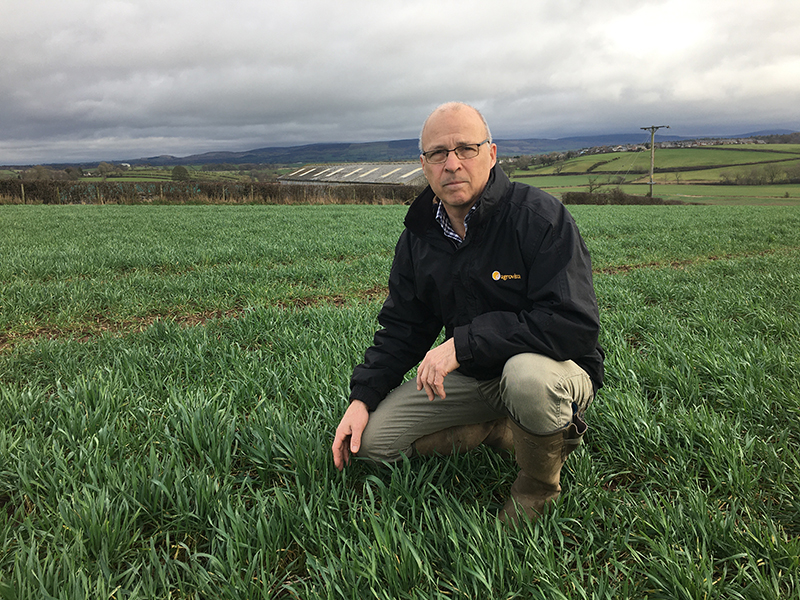Content originally published in the Farmers Guardian
Most crops look pretty good in this part of the world, with no real problems to speak of. It remains cold as I write this in mid February but, while winter crops are slow to grow, they have plenty of potential.
We missed a lot of the rain that hit other areas; the gauge captured just 130mm from November through January. It’s a very different picture to last year, when it remained too wet to travel well through March.
Slurry applications began in earnest at the beginning of the month. Some winter barley I walked last week on lighter land had already received potash and urea and the tractor didn't leave a mark.
The forecast looks reasonably settled but cool – ideal conditions for applying urea on most winter cereals and grass. It’s not going to wash away and it's not going to volatilise.
A lot of people looking to cut silage as early as possible in May will welcome the chance to get urea on. And current silage stocks are dwindling, so many others who graze cows will want an early turnout.
Most winter cereals will also benefit from early nitrogen, although anyone with forward wheat should hold off for now to avoid excessive tillering.
Some cereals crops are showing manganese deficiency, particularly earlier drilled winter barley on lighter land. In addition to manganese, I recommend adding a phosphite product such as Calfite Extra or an amino acid/trace element blend like Terra Sorb Foliar Extra. I would also use these on more backward wheat and barley crops to boost root growth and build biomass.
Any cereal crops that are due to receive potash should be treated now. April is too late – plants need the nutrient for growth, but it takes a while to break down and become available.
Some people started to drill spring cereals last week on land not needed for slurry and FYM applications, which must be right on lighter soils that aren’t prone to slumping. There’s no point missing any opportunity to get plants established early so they can put down good roots and tiller well, particularly important if we get a dry April or May.
We could see more maize grown this year, due to short and/or poor forage stocks this winter after a very difficult 2024. With that in mind, let’s hope this season’s early promise continues.
Simon Nelson advises farmers on a wide range of arable and forage crops across Cumbria, north Lancashire and into south-west Scotland.


